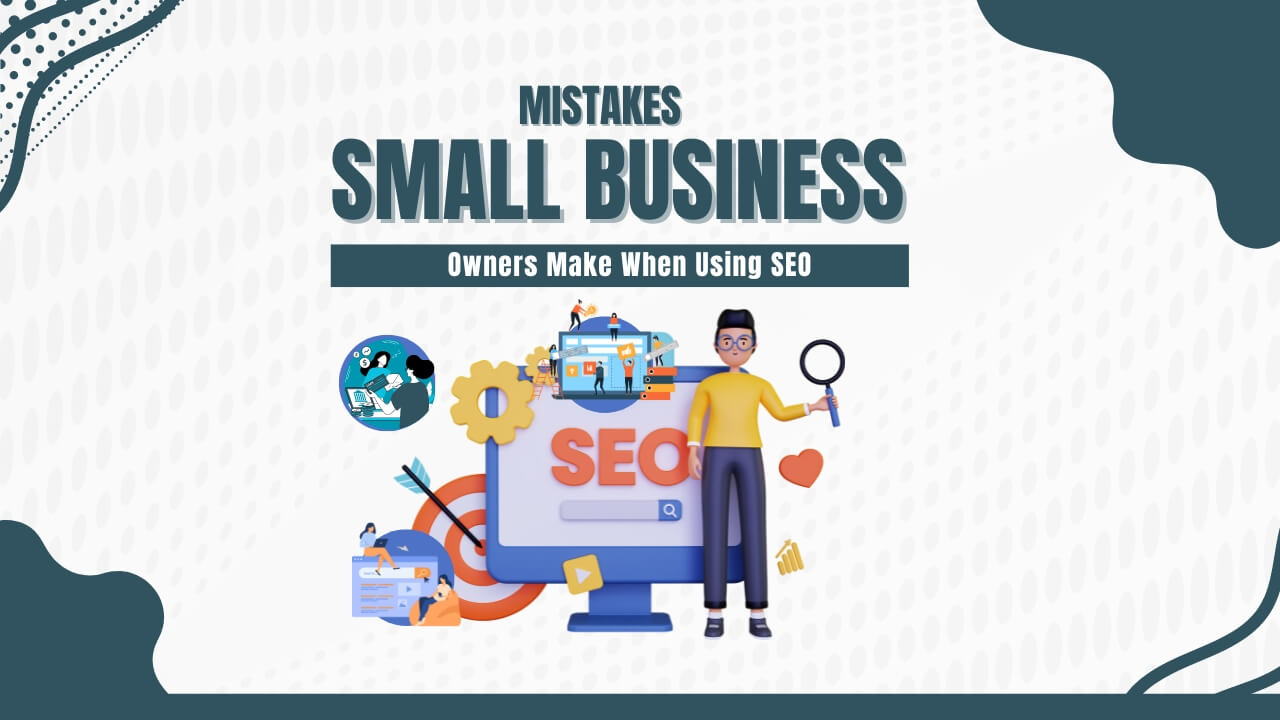In today’s digital Era, having online visibility is very important for businesses and content creators alike. Google, being the tech giant, offers two powerful tools that help to attract the users all over the internet to their advantage, Google Ads and Google Adsense.
Both platforms have different purposes but serve a common goal of making the web a lucrative space for all parties involved.
Google Ads effectively allows businesses to display their advertisements across Google’s vast range of networks, which includes Google search results, websites, and videos, to effectively target the audiences.
On the other hand, Google Adsense allows the website owners and other content creators to earn money by hosting their ads on the precise platforms. While they attract different users, advertisers and publishers, respectively understanding the nuances of each can significantly impact the business online strategy.
Whether your main aim is to promote your products and services or to monetize your website’s traffic, Google’s advertising platforms offer a wide range of solutions that will help you to achieve your business goals.
Well the main aim of this blog is to demystify Google Ads and Google Adsense, providing a detailed comparison which will help you to decide which platform aligns best with your digital marketing or monetization strategy so stay tuned with Sujit Shukla.
What is Google Ads?
Google Ads, also known as Google AdWords, is a comprehensive advertising platform that enables businesses of all sizes to display their ads across a wide range of Google’s extensive network.
These networks mainly include the Google Search Network, Google Display Network, and the YouTube platform, among others. Google Ads basically operates on a pay-per-click (PPC) model, where advertisers have to pay each time when a user clicks on the ad.
Types of Campaigns
- Search Campaigns: These ads appear in Google’s search results when people search for keywords related to the advertiser’s product or service. It’s an effective way to capture intent-driven traffic.
- Display Campaigns: Utilizing Google’s Display Network, these campaigns show ads on a vast array of websites across the internet, targeting users based on their interests, demographics, or past interactions with the advertiser’s website.
- Video Campaigns: Ads are shown before or during YouTube videos, targeting users based on their viewing behavior and preferences.
- Shopping Campaigns: These campaigns allow e-commerce businesses to display product listings directly in Google’s search results.
Key Features and Benefits
- Targeted Advertising: Google Ads offers sophisticated targeting options, which includes keyword targeting, demographic targeting, and remarketing, to reach potential customers who are most likely to convert.
- Measurable ROI: With detailed analytics and reporting tools, advertisers can easily track the performance of their ads, measure return on investment, and can also easily make a data-driven decision.
- Flexible Budgeting: Advertisers do have a full control on their spending, with the ability to set daily budgets and adjust their bids based on their advertising campaign.
Google Ads also provides a platform for businesses to increase their online presence, and to drive efficient traffic to their websites, and ultimately increasing the sales and conversions. Through its various campaign types and targeting options, Google Ads is one of the flexible and powerful sources of online advertising.
What is Google Adsense?
Google Adsense is basically a program run by Google that allows publishers in the Google Network of content sites to serve automatic text, image, video, or interactive media advertisements to their targeted audience.
These ads are basically administered, sorted, and maintained by Google itself. They can generate revenue either by pay-per-click or also by per impression basis. Google Adsense is one of the essential tools for website owners and content creators who are wishing to monetize their online content.
How it Works
- Sign-Up and Approval: Content creators or website owners do sign up for an Adsense account and effectively submit their site for approval. Google reviews the site to ensure it meets the Adsense program policies and guidelines.
- Ad Placement: Once it is approved, publishers can place Adsense ad code on their website. Google’s algorithm after that matches the ad and the site’s content and audience, optimizing the relevancy of their ads displayed.
- Revenue Generation: Publishers can also earn money when the site visitors view or click on the ads. Earnings will be based on the ad’s type, the content being served, and also based on the competition.
Key Features and Benefits
- Ease of Use: Google Adsense is straightforward to set up. Once your account is approved, you simply need to copy and paste the ad code on your website where you want ads to appear.
- Customizable Ad Units: Publishers also have the flexibility to customize their ads based on the way they want and can also effectively place the ads on their site, ensuring a seamless integration with their site’s design and content.
- Access to a Large Pool of Advertisers: Through Google’s advertising network, Adsense gives publishers access to a wide range of advertisers. This significantly increases the chance of displaying those ads that are highly relevant to the audience, leading to better engagement and high earnings.
- Performance Reports: Google Adsense provides detailed reports that allow publishers to effectively track their earnings, page views, click-through rates, and other critical metrics. These insights can help the publishers to optimize their ad strategy and to increase the revenue over time.
Google Adsense stands out as a user-friendly platform that empowers website owners and content creators to earn revenue from their online content. With its robust targeting capabilities and extensive advertiser network, Adsense can effectively match ads to your site’s content and audience, enhancing the user experience while providing a valuable revenue stream.
Comparing Google Ads and Google Adsense
The digital advertising landscape is vast, both Google Ads and Google Adsense serve as two pillars for advertisers and publishers, respectively. Though they might seem similar at first glance but their functions, benefits, and target users are very much different. Understanding these differences is very important to make an informed decision about which platform to use to achieve your online goals and objectives.
Audience Targeting
Google Ads offers advertisers with a bunch of targeting options to effectively reach their potential customers.
These include keyword targeting, where ads basically appear based on the search intent and the term entered by users; demographic targeting, which allows ads to be shown to users based on their age, gender, location, and more
Remarketing is another one of the powerful features, enabling advertisers to target users who have once previously visited your website.
Google Adsense, on the other hand, does not provide full control to the publishers over which ads appear on their website.
Instead, it uses an automated system to place ads based on the content of the website and also based on the interest of the audience.
This ensures that the ads displayed are relevant to the relevant audience, which potentially results in the increase of engagement rate.
Monetization and Cost Implications
For advertisers using Google Ads, the main cost implication is the budget they allocate to their advertising campaigns.
Google Ads as you know operates on a pay-per-click (PPC) model, which means advertisers have to pay each time when someone clicks on their ad. This model helps in precise budget control and the ability to measure ROI effectively.
Google Adsense publishers on the other hand earn money based on the ads displayed on their websites. This can be through clicks on the ads or impressions (views).
The amount earned can vary widely depending on the niche of the website, the location of the users, and the competition of that ad in the market. While there is no direct cost to the publisher, optimizing the website content to attract the high-value ads can significantly impact the revenue.
Ad Formats and Placement
Google Ads being the king of the advertising kingdom provides advertisers with several ad formats, which mainly includes text ads, image ads, video ads, and also product listings. These ads can appear on Google’s Search result and Display Networks, on YouTube, and also on the partner websites.
Advertisers have immense control over where their ads are placed and can use ad extensions to enhance their ads’ visibility and effectiveness.
Google Adsense offers publishers various ad formats to integrate into their websites, such as display ads, text ads, link units, and more recently, auto ads, which automatically places the ads where they are likely to perform well.
Publishers can easily customize their ad appearance to match their website design, but they have less control over the specific ads that appear.
Ease of Use
Google Ads features do provide a comprehensive interface that provides the advertisers with a detailed control over their campaigns, from targeting to adjusting their bids. While powerful, there is a learning curve, and maximizing the platform’s potential often requires a detailed understanding of the digital advertising principles.
Google Adsense is mainly designed to be simpler for publishers for easy to use. Once it is approved, publishers only need to place their ad code on to their websites, and Google handles the rest. The platform is mainly user-friendly, even for those with a limited technical or advertising knowledge.
Success Metrics
Success on the Google Ads is mainly measured by the campaign performance metrics such as click-through rates (CTR), conversion rates, and also on the return on ad spend (ROAS). Advertisers must continuously optimize their website campaigns based on these metrics to achieve their marketing goals.
For Google Adsense publishers, success is basically measured by their earnings, which are mainly influenced by the metrics such as page views, CTR, and cost per thousand impressions (CPM). Publishers mainly focus on optimizing their Website content and site layout to maximize the ad revenue.
Choosing Between Google Ads and Google Adsense
Deciding whether Google Ads or Google Adsense is right for your business mainly depends on your role (advertiser vs. publisher) and objectives (promoting products/services vs. monetizing content).
For Businesses and Advertisers: If your goal is to increase visibility, drive traffic to your website, or boost sales, Google Ads is the right choice. It offers detailed targeting options and a variety of ad formats to reach potential customers effectively. Start by clearly defining your advertising goals, budget, and target audience to leverage Google Ads fully.
For Content Creators and Website Owners: If you’re looking to monetize your website or blog, Google Adsense offers a straightforward way to earn revenue from your content. Focus on creating high-quality, engaging content and driving traffic to your site to increase your Adsense earnings. Ensure your site adheres to Google Adsense policies for a smooth approval process.
Both platforms require an understanding of their respective mechanisms and best practices for optimization. By aligning your strategies with your objectives and continuously monitoring performance, you can maximize the benefits of Google Ads or Google Adsense.
Conclusion
Google Ads and Google Adsense represent two sides of the online advertising coin, each with unique features, benefits, and strategies for success. While Google Ads focuses on helping advertisers reach their target audience through targeted campaigns, Google Adsense enables publishers to monetize their content effectively.
By understanding the differences and capabilities of each platform, businesses, advertisers, and content creators can make informed decisions that align with their goals. Whether you’re looking to promote your products or services or seeking to generate revenue from your website or blog, Google’s advertising platforms offer valuable tools to help you succeed in the digital landscape.
Encouraging exploration and strategic use of Google Ads and Google Adsense can unlock new opportunities for growth and revenue in the ever-evolving online world.






